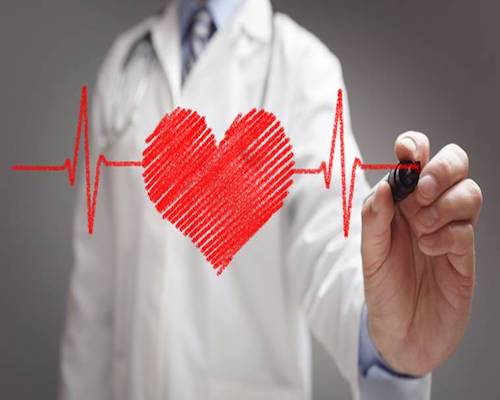New Delhi, August 14, 2018 :
Pumping Heart Attack vs Electrical Cardiac Arrest
The most common confusion is the difference between a heart attack and cardiac arrest. A heart attack (myocardial infarction or MI) is defined as damage to part of the heart muscle caused by inadequate blood flow to that area. Most of the time, this happens due to a blockage in one of the heart’s arteries. Known as a type 1 heart attack, such blockages typically occur when cholesterol-laden plaque lining an artery ruptures. A clot forms, obstructing the vessel.
While a heart attack is a plumbing problem, a cardiac arrest is an electrical problem. Cardiac arrest happens when the heart’s electrical system malfunctions, causing it to beat rapidly and chaotically — or to stop beating altogether. Without blood circulating to the brain, lungs, and other organs, the person gasps or stops breathing and becomes unresponsive within seconds.
A heart attack is a common cause of cardiac arrest, but most heart attacks do not lead to cardiac arrest. Other possible causes of cardiac arrest include heart failure, a clot in the lungs, a serious imbalance of potassium, magnesium, or other minerals in the blood, a drug overdose, or a blow to the chest.
The term “widow maker” refers to a heart attack caused by a blockage near the top of the left anterior descending (LAD) artery, the main artery that supplies blood to the front of the heart. However, heart attacks that involve the LAD are not necessarily fatal, and those involving other arteries can be deadly, too.
Common heart attack symptoms include:
- Uncomfortable pressure, squeezing, or pain in the chest
- Pain or other uncomfortable sensations in an arm, the back, neck, jaw, or stomach
- Shortness of breath
- Sudden nausea or vomiting
- Lightheadedness or dizziness
- Unusual fatigue.
Signs of cardiac arrest are a sudden loss of responsiveness and abnormal breathing (either not breathing or only gasping). Give hands-only cardiopulmonary resuscitation (CPR) until help arrives.
Two days walking, 2 days strengthening exercise and 2 days aerobics :
Strength training (with free weights, weight machines, or resistance bands) can help build and maintain muscle mass and strength. Strong muscles lead to strong bones. And strong bones can help minimize the risk of fracture due to osteoporosis. A combination of age-related changes, inactivity, and inadequate nutrition conspire to gradually steal bone mass, at the rate of 1% per year after age 40. As bones grow more fragile and susceptible to fracture, they are more likely to break after even a minor fall or a far less obvious stress, such as bending over to tie a shoelace.
Numerous studies have shown that strength training can play a role in slowing bone loss, and several show it can even build bone. And strength training, in particular, has bone benefits beyond those offered by aerobic weight-bearing exercise. It targets bones of the hips, spine, and wrists, which are the sites most likely to fracture.
Mantras
- If you can walk 500 meters in six minutes you do not have significant underlying heart disease
- Everyone should learn the life saving technique of CPR.
Dr KK Aggarwal
Padma Shri Awardee
Vice President CMAAO
President HCFI







